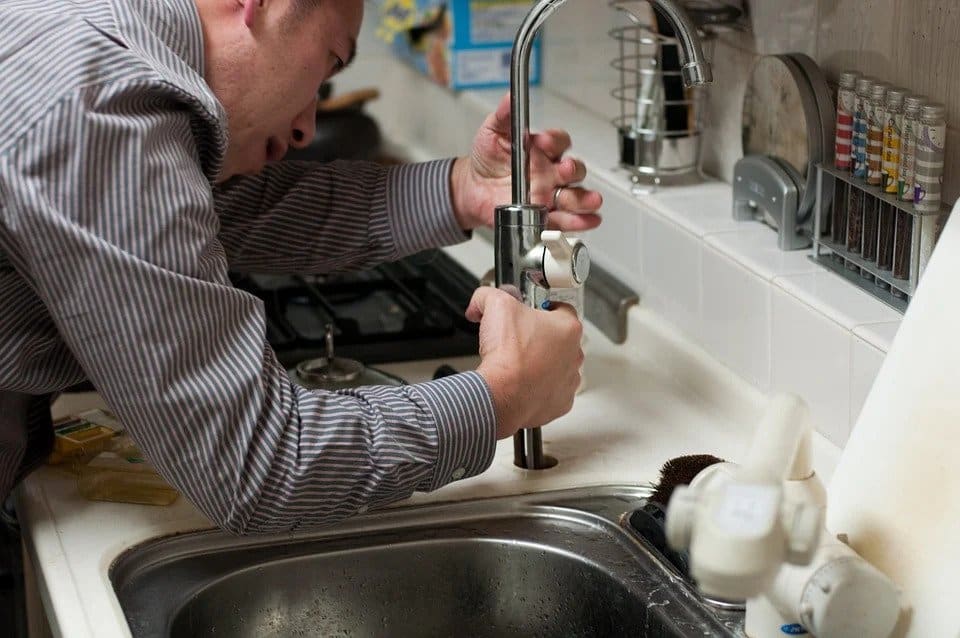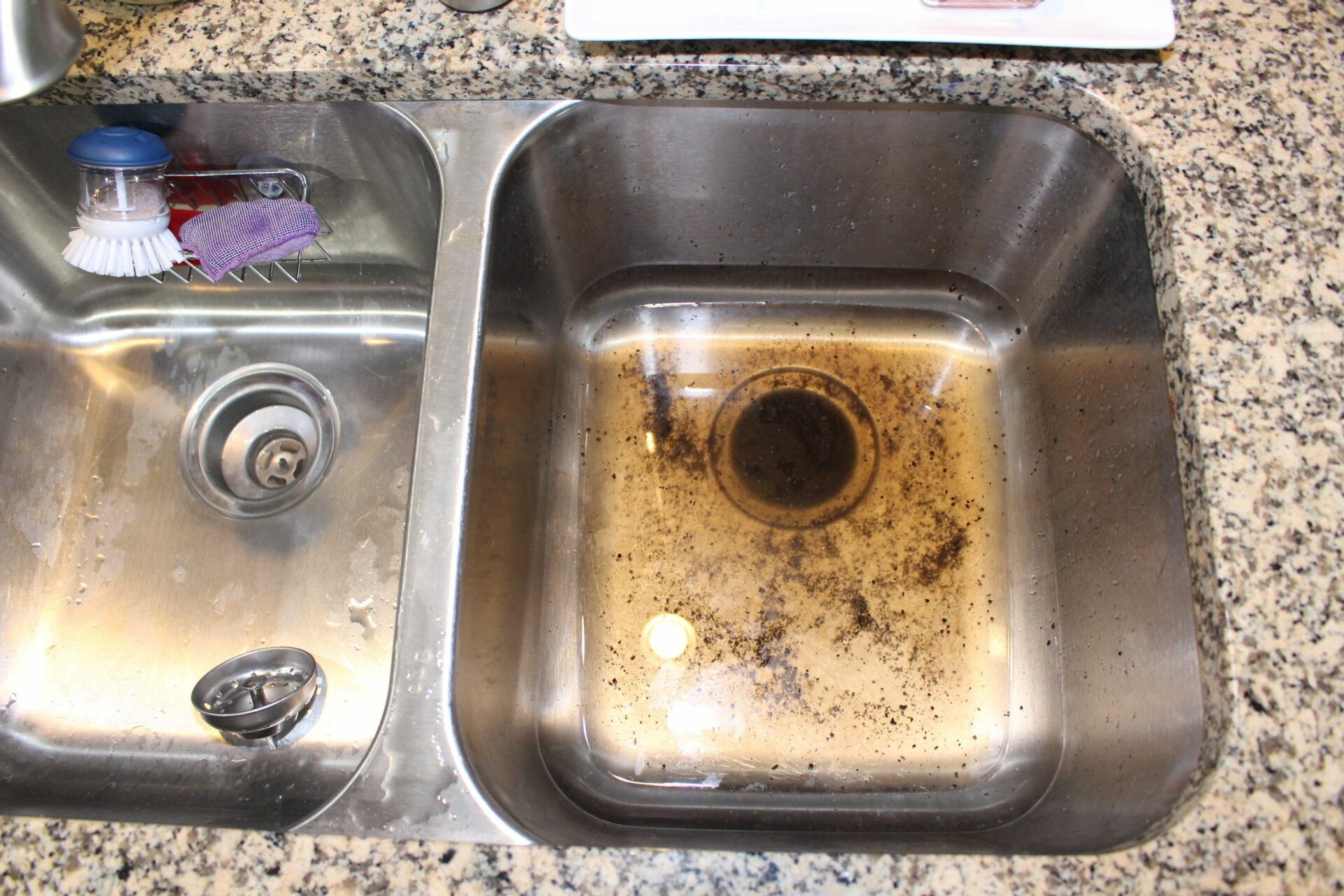Have trouble draining water from your sink? Or did you just start your garbage disposal and can hear a whirring sound, but the impellers are not working? In either case, you might be dealing with a clogged garbage disposal.
Even the most potent garbage disposals can get clogged if you put too much food or big chunks of meat, bones, or vegetables through it. I have had a clogged garbage disposal more than once myself. And if there’s one thing I can tell you, such clogs are challenging to locate.
They may be near the shredder ring or inside the drain. Moreover, they may be because of a big food particle or a foreign object stuck inside the disposal. Unless you fix your clogged garbage disposal, you’ll have a burnt motor that is far more expensive to repair/replace.
Keep reading to find some easy steps you can follow to unclog your garbage disposal.
Related: Best garbage disposal unit for a septic system
Table Of Contents
How to Unclog a Garbage Disposal Step-by-Step Guide
Step 1: Turn off the Garbage Disposal Unit
Before unclogging your garbage disposal, it’s imperative to switch it off. Never stick anything inside a garbage disposal when it’s running. Otherwise, you may suffer injury.
Step 2: Drain the Water from the Sink
You can skip this step if there’s no standing water in your sink. But if there is, you first need a flat plunger. Make sure you fill the sink with water such that the plunger has a water seal around it.
Then keep pushing the plunger down quickly and with force. This should help create the right amount of water pressure and let the water drain.
Step 3: Look Inside With a Flashlight
I did mention earlier that it’s challenging to find the exact location of the clog. And while that’s true, it doesn’t mean you shouldn’t look for the clog. Once you’ve drained all the water from the sink, take a flashlight and peek down the disposal to see if you can find the source of the clogging.
If you can see the object that’s clogging your garbage disposal, use pliers to remove it from the disposal. It may take more than one attempt and several minutes to reach the object.
Step 4: Use a Natural Cleanser
If you successfully removed the chunk of food in the last step, you don’t need to follow this one, but it’s good if you do. If you couldn’t locate the clog’s source and remove it, you should try this step.
Mix half a cup of vinegar with ¼ cup of baking soda and pour it down the disposal unit. Leave it for 10 minutes before running hot water down the unit. Many types of food waste will come off with this solution. Ideally, you should have an unclogged garbage disposal after this step.
Step 5: Run and Test the Garbage Disposal
If the above step worked, close the tap and run the garbage disposal as usual after pouring down the hot water. If you face no problems or blockages while doing so, your garbage disposal unit is finally unclogged.
If your garbage disposal unit remains clogged after following the above steps, try the methods below.
1. Rotate the Impeller Blades Manually
Sometimes, you may need to free the impeller blades manually and then pull out the food chunks from the disposal. While you can use a wooden spoon to do this, a better and more precise way is using an Allen wrench.
- Make sure the garbage disposal is turned off.
- Insert an Allen wrench through the hex socket at the bottom of the garbage disposal until you reach the impeller controlling hex key.
- Rotate the impeller both clockwise and counterclockwise to free them up. You should be able to feel some resistance from the clogging at this point. When you free up the blades, they’ll rotate smoothly without resistance.
- Turn the power back on and run the garbage disposal to check if it works properly.
2. Clean the P-Trap
A clogged garbage disposal doesn’t always result from a problem within the garbage disposal unit. It may arise due to a clogged P-trap. The P-trap is usually located below the garbage disposal and between the pipe that connects the garbage disposal to the drain. The P-trap prevents the backflow of sewage water and odor from the main drainage into the garbage disposal.
Disconnect the P-trap from the disposal pipe and let the remaining water and waste flow into a bucket. Clean the P-trap thoroughly and run water through it before reattaching it to the garbage disposal. Then, run the disposal to check whether or not it’s unclogged.
If none of the above methods works, you need to call a plumber. It may be expensive, but taking too many risks with your plumbing/garbage disposal system can prove even more costly.
What Causes a Clogged Garbage Disposal?
There are a variety of reasons why a garbage disposal may be clogged. Here are some of the most common:
-
Dumping Incorrect Food Scraps
Garbage disposals aren’t meant to handle all types of food waste. For many garbage disposals, hard scraps like bones and meats can be difficult to grind.
Oily, hot, or starchy food can also create a thick buildup as it dries. This might result in stuck blades quite often.
Vegetable peels like lettuce leaves and banana peels are also not the best food items to dump into a garbage disposal. The same is true for stringy foods like pasta and string cheese.
-
Overloading the Garbage Disposal
No matter how robust your garbage disposal unit is, it will start clogging if you overload it with too much food waste. Dumping the whole day’s worth of trash at the end of the day at once isn’t a good idea. Instead, run the garbage disposal multiple times a day if possible.
Even if you have a large amount of waste that you need to dispose of, make sure you put it through the garbage disposal slowly. Also, ensure that the blades move every time you put a larger quantity of food into the disposal. Sometimes, an overload can obstruct the blades.
-
Running Hot Water Through the Garbage Disposal
Hot water can worsen the clogging in your garbage disposal unit. It can loosen the buildup of oil and grease and cause it to flood into the blades or the shredder ring. Once this buildup hardens again, it will clog the blades.
-
Not Cleaning the Garbage Disposal System
Regularly cleaning the garbage disposal unit is essential to ensure it doesn’t get clogged. You can use a store-bought garbage disposal cleaner or use a natural method like baking soda and vinegar to clean your garbage disposal. Whatever the method, ensure that you clean it at least once or twice a month.
Also, after every use, once the garbage disposal unit finishes grinding the waste, run cold water through it for a minute or so. Then, turn off the main switch.
How Do I Know if My Garbage Disposal Is Clogged?
If you haven’t dealt with a clogged garbage disposal before, you may not be able to figure out if your garbage disposal is clogged or if it’s another internal issue. Here are some of the most typical signs of a clogged garbage disposal:
- A humming sound every time you turn on the disposal.
- Vigorous vibration without any movement in the blades
- The food doesn’t go through even when the disposal is turned on
- Backflow of dirty water in the sink when you turn on the garbage disposal
- Slow drainage or no drainage
- Foul odor coming from the disposal in addition to one of the above signs
If the above signs repeatedly occur despite multiple unclogging attempts, contacting a plumber should be your next step. Remember that some of the above issues, like a humming sound or vibration, may also indicate a faulty internal component, especially if unclogging the disposal doesn’t work.
You won’t see any of these signs if you keep your garbage disposal clean and do not dump non-biodegradable waste into it. Following the best practices of maintaining a garbage disposal, like not overloading it, using ice to sharpen the blades once in a while, and not dumping hard food scraps like bones in a low-power garbage disposal, will also help you avoid clogging.
FAQs
Why is my garbage disposal backing up?
A clogged P-trap is the most common reason for a garbage disposal to back up. When the P-trap is clogged with food waste, it fails to prevent the backflow of sewage water into the drain and the garbage disposal.
How do you unclog a garbage disposal with standing water?
If you have standing water in the sink, drain it thoroughly before unclogging your garbage disposal. To drain the sink, you can use a flat plunger, bucket, and mug to empty the water. Try a plunger first. But if it doesn’t work, use the mug and bucket.
When I run my garbage disposal, water comes up the other side. Why?
Water coming up from the other side means a clogged drain line. You can attempt to disconnect the drain pipe from the garbage disposal and clean it manually. If that doesn’t work, you may want to call a plumber.
Is it OK to pour boiling water down a garbage disposal?
You should not pour boiling or hot water down the garbage disposal. This is because hot water can cause the grease and oil buildup to loosen and clog the drain. But when cleaning the garbage disposal with vinegar and baking soda, you can pour boiling water down the disposal.
Can I Plunge a Clogged Garbage Disposal?
Using a flat plunger may help you unclog a clogged garbage disposal. But a flange plunger won’t help. To use a plunger, ensure you fill the water in the sink to a level that submerges the lip of the plunger. Then, push it forcefully to let the waste go through.
Conclusion
I hope that unclogging your garbage disposal will be easy for you now that you’ve read the step-by-step guide above. Remember, if you clean your garbage disposal regularly and do not dump any non-food waste into it, it shouldn’t get clogged easily. Also, be careful not to dump vast quantities of food waste into a garbage disposal.
Have more questions about cleaning or unclogging a garbage disposal unit? Comment them down below, and I’ll answer them ASAP.



